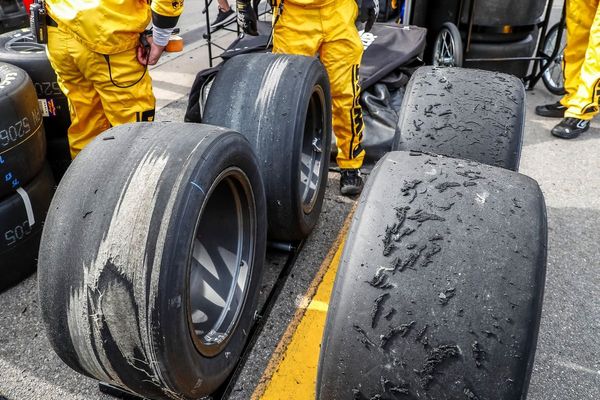
Americans are increasingly purchasing cars with electrically assisted internal combustion engines. Toyota sold over one million electrified cars last year. Honda’s electrified vehicles accounted for a quarter of its 1.3 million sales. Hyundai’s Santa Fe and Tucson hybrids are increasingly popular, too.
The powertrains underpinning these cars deliver astonishing fuel economy in the real world. But under the hood, not all hybrids are identical. Even though they accomplish the same task—improving efficiency and reducing the load on the engine—automakers have adopted different approaches.
Five different types of hybrids exist: mild hybrids, plug-in hybrids, parallel hybrids, series hybrids (also known as range extenders or E-REVs) and power-split hybrids, which are alternatively called series-parallel hybrids. You'll also see plenty of people confusing these terms, like when they refer to any hybrid without a plug as a "mild hybrid." In reality, that term means a car with a 48-volt starter generator, which generally just uses an electric motor as a torque fill or efficiency booster. Traditional hybrids can typically power the wheels on electricity alone for a stint, and come in parallel, series and power-split types.
The Hyundai Santa Fe Hybrid is one example of a parallel hybrid. A classic example of a series-parallel or power-split hybrid is the Toyota Prius. They have plenty in common but also have considerable differences in the type of components they use and how they function.
A new video from Paul Turnbull, the lead engineer at Munro & Associates, serves as a great explainer detailing the differences between a parallel hybrid and a power-split or series-parallel hybrid.
We’re only focusing on these two systems for this article, but check out InsideEVs deep dives on plug-in hybrids, mild hybrids and range-extenders if you want to brush up your knowledge.

Parallel Hybrid System
Turnbull analyses the Santa Fe Hybrid’s floor to explain how a parallel hybrid works. This system has existed for decades, but its novelty factor has not really faded. It’s still very clever and innovative in different ways.
The latest Santa Fe Hybrid gets a 1.6-liter 4-cylinder turbo engine. It's mated to a 44.2-kilowatt electric motor and a 1.5-kilowatt-hour lithium-ion battery. The combined output is 231 horsepower and 271 pound-feet of torque.
The electric motor is squeezed between the engine and the six-speed transmission. A clutch helps the engine and the e-motor work together or independently to power the wheels, which is why it’s called a parallel hybrid.
Not only does the electric assist mask turbo lag, helping the vehicle get off the line smoothly, but also improves fuel efficiency. It does that with regenerative braking, sending kinetic energy back into the battery, which is then redeployed when needed.
Turnbull says the electric motor is packaged like a “donut,” with the clutch housed within the motor to optimize space. They’re both housed in just 40 millimeters of space between the engine and the transmission, so they’re very tightly packaged.
Unlike Toyota hybrids where the battery is mounted under the rear seats, the Santa Fe’s pack is mounted at the rear right side the floor and has a tiny footprint. It also uses a regular six-speed automatic transmission, and that’s where it mainly differs from a power-split hybrid.
Power-Split Hybrid System
Most automakers have moved to power-split or series-parallel hybrids. Some examples include the Toyota RAV4, the Honda CR-V and Accord hybrids and the Ford Escape hybrid.
In these cars, the engine routes power through a planetary gearset. It uses three gear types—called the “sun gear,” “planet gear” and “ring gear.” They all have different sizes and operate at various speeds to blend the power from the gas engine and the e-motors. Planetary gearsets are also used in conventional automatic transmissions, but here they're used to blend two inputs.
The engine drives the planetary gear, whereas the electric motor drives the sun gear. The output from those two units is then channeled through the ring gear towards the driveshaft and the wheels.
With this system, the engine can directly power the wheels with fixed gear ratios. But it can also constantly alter those gear ratios when the electric motor kicks in, making this transmission continuously variable—hence the name e-CVT.

And that’s where the big difference lies. Instead of using fixed gear ratios, like in the Santa Fe Hybrid, the Toyota RAV4 uses the e-CVT for two main purposes. One, it helps the engine rev in its most efficient power band. Two, its dual e-motors provide more power and fuel savings than the single motor set-up in parallel hybrids.
“Instead of having six individual gear ratios, for every speed and torque demand from the customer, the [power-split hybrid] is able to optimize the perfect engine speed to deliver the power to the wheels in the most efficient way,” Turnbull said.
That’s why the range-topping 2025 RAV4 Hybrid XSE is slightly more efficient in the city (41 mpg), compared to about 35 mpg on the Tucson Hybrid Limited. However, both systems' combined city and highway efficiencies are broadly similar. Other factors like tire sizes and driving patterns also influence efficiency.
But that’s not everything that a hybrid system does. It also helps recharge the low-voltage pack to run in-vehicle systems such as lighting and the climate.
Toyota also uses a more complex three-motor system on its hybrid SUVs. The third e-motor at the rear delivers electronic all-wheel-drive capability in low-traction situations. That eliminates the need for a mechanical driveshaft towards the rear axle but still offers phenomenal fuel efficiency.

The video above is worth watching if you’re interested in the nuances between different hybrid systems. They’re not all the same, and one is marginally more efficient than the other, but both promise significant savings to your wallet over time. And with the shift to full EVs taking longer than expected, hybrids are about to get more sophisticated, with more energy dense batteries and more efficient motors.
Have a tip? Contact the author: suvrat.kothari@insideevs.com







